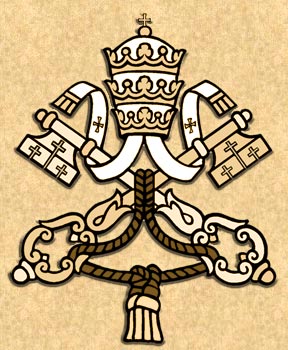Everything the Church does is wise. In Her wisdom, She classifies the different levels of honor to be paid to God, Our Lady and the saints. The first level, called latria or adoration, is only for God and Our Lord Jesus Christ, Who is the Incarnate Word.
The cult of dulia is veneration or mediation, which the Church pays to the saints. However, there is a special category of honor that the Church only pays to Our Lady, called hyperdulia. Our Lady ranks so high above all other saints that the Church had to create a special cult to describe devotion to her. This demonstrates the unique position of Our Lady in all creation.
The Church teaches this in a number of ways. For example: Besides that of Our Lord and Saint John the Baptist, no other birthday is celebrated; no other saint has more than one feast day per year; and while the Church does not allow the same saint to be represented multiple times on the same altar, She permits any number of images of Our Lady to be placed anywhere in a church. Also, the Church celebrates dozens of calendar feasts, liturgical ceremonies and pious practices in Our Lady’s honor.
Among these, Our Lady’s Holy Nativity has a special significance, since it marked a new era in the history of the chosen people.
Since the Old Testament is no more than the account of the wait for the Messias, it can be divided into two phases: The first would be the 4,000-5,000 years before Our Lady’s birth. The second is after that blessed moment in which Providence resolved to bring forth she, whose prayer would bring the Messias.
Her birth was the arrival of that perfect creature who was full of grace before God. Without her, the prayers and sufferings of all humanity would have failed to bring the Incarnation. However with her, the trajectory of history was forever changed. All prayers became more effective and a new manner of blessings and graces began producing sanctity like never before.
Our Lady served as the “Doorway to Heaven” that the hope of the Messias’ coming passed through. Her presence on earth was the occasion for signal graces. The height of her contemplation gave her a force of presence. It made her a fountain of so many and such high graces, that her very existence was an annunciation of Our Lord’s coming.
Thus, the feast of Our Lady’s nativity is very dear. It is the beginning of the Redemption that would eventually defeat the evil powers of paganism and the Gentiles.
There is a profound relationship between Our Lady’s coming and what is occurring in modern society. Once again, Our Lady has taken a pivotal role in history, by raising up souls that burn with the desire for her reign amid the darkness of neo-paganism. They clamor for it and fight for its implantation on earth.
These souls are like Our Lady of the Old Testament. The light has not yet come; neither has the redemption, victory nor liberation from the devil. However, these souls spread graces of hope and determination, in such a way, that they herald the coming victory.
Thus, Our Lady’s nativity is symbolically repeated to prepare the coming of her reign, prophesied by Saint Louis de Montfort and the apparitions of Fatima.
For those who desire Our Lady’s victory, this feast day is especially important. These should pray fervently, for the immediate coming of Her reign, when the long dark night of sin will be eclipsed by her triumph.
December celebrations and farewells
2 days ago








